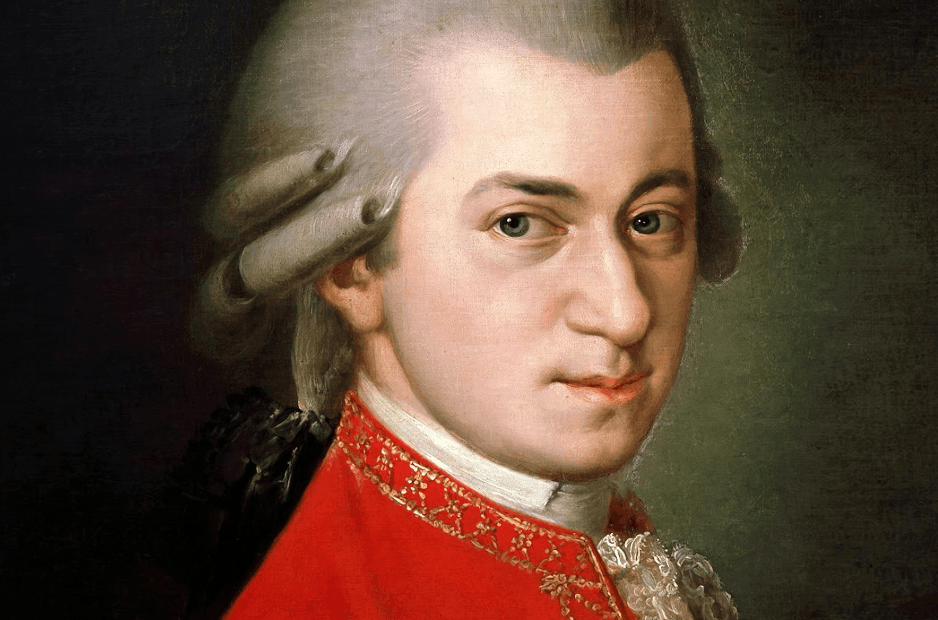1. His real name isn’t Wolfgang Amadeus Mozart!
Mozart was actually baptised Johann Chrysostom Wolfgangus Theophilus. A mouthful, right? No wonder he shortened his name! As for Amadeus, it was actually quite common at the time to translate your name depending on the country you were in. So when he was in Italy, he was Wolfgango Amadeo, in Germany he was Wolfgang Gottlieb.
He seemed to prefer «Wolfgang Amadè» as can be seen on his marriage contract with Constanze Weber. The Latin form apparently originates from his facetious tendency to sign letters in mock Latin, «Wolfgangus Amadeus Mozartus». For another example of Mozart’s characteristic wit, check out the humorous and spirited finale of his Piano Concerto N° 18 !
2. He was a talented billiard player
Around a billiard table was the place to be in 18th-century Vienna! No wonder that you could find Mozart there, amongst aristocrats and other artists. More than the social interaction, the game also appealed to his very playful nature. He reportedly even bought a billiard table for himself in the middle of the 1780s. Maybe that’s how he got the inspiration for his K113, a musical genre meant for both entertainment and leisure!
3. His BFF was Joseph Haydn
The two composers met in Vienna in the early 1780s as they were both already quite renowned. Despite the age difference (Haydn being 24 years Mozart’s senior), they had great respect for one another, which quickly grew into a close friendship. Mozart dedicated six string quartets to his mentor, and Haydn admitted that his friend was able to express emotions like no other composer – himself included. You can learn more about their artistic bromance during a small lecture in French before at the Philharmonie on 29.01.
Aside from Haydn, Mozart was quite the «popular kid» in town and surrounded himself with many friends for whom he liked to compose. You'll get to hear two of these musical presents at the Philharmonie this month:
· The : part of a set of quartets dedicated to King Friedrich Wilhelm II of Prussia, who played the cello – Mozart made sure to give a prominent place to the instrument!
· The K113, written for Mozart’s friend Michael Puchberg, who helped him out when he was struggling financially. Better than a thank-you card!
4. The circumstances of his death are quite mysterious
Was he poisoned? Did he have an infectious disease? Did he overwork and overstress himself? Numerous theories exist, but as to which one is correct, no one knows… What is sure is that the prolific genius composer lived fast and died at the young age of 35, on 05.12.1791.
The poisoning theory was popularised in the 19th century by Alexander Pushkin’s Play Mozart and Salieri, later adapted into an opera by Nikolai Rimsky-Korsakov. In the 20th century, another play came to life, Peter Shaffer’s Amadeus, adapted into the Oscar-winning biopic of the same name shortly after. They all portray Italian composer Antonio Salieri as an envious and tormented rival, who ends up poisoning his competitor.
This was all reinforced by the fact that Mozart himself talked in letters about his suspicions of being poisoned… but he later disregarded his own concerns. Maybe he was just a drama queen! Today, the medical and historical consensus is that he likely died of natural causes like rheumatic fever or kidney disease, as there is no substantial evidence to the poisoning theory.
Regardless of how he died, we can forever celebrate how he lived by enjoying timeless masterpieces such as the Piano Concerto N° 21, which you can discover on 21.01 at the Philharmonie!
5. Happy birthday, Wolfie!
Enough talk about death, we’re celebrating! This month is HIS month, as the little genius was born in Salzburg on 27.01.1756. He composed his first work at 5, his first symphony at 8. Mozart’s life may have been short, but it was quite productive! He wrote over 700 pieces, including 41 symphonies, 27 piano concertos, 15 masses, 23 operas, 36 violin sonatas, 23 string quartets… and more!
Besides being a terrific composer, he was also a multi-instrumentalist! He played the piano, the harpsichord, the organ, the violin and the viola. To discover his work as a violist, come to the Philharmonie on 12.01.: Claus-Christian Schuster will be talking in German about the , where Mozart put his favourite instrument in the spotlight by unusually composing for two violas.
Hope you had fun learning more about Mozart! Come celebrate him with us at the Philharmonie: there are several concerts featuring some of his best works this month. Book your tickets on the or the Phil30 app. See you there!
